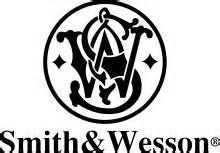Classic Smith And Wesson Firearms Of The 50’s And 60’s
The Classic Smith and Wesson revolvers were the primary firearm produced by the Smith and Wesson Firearms Company in the 1950’s and 60’s. They would start to produce a semi-auto pistol in 1954 but they would concentrate on the revolver line for most of its history. In 1952 Smith & Wesson would celebrate their centennial. They would be making firearms for 100 years.
I will focus on the Classic Smith & Wesson handguns from the 1950s and 60s era. The emphasis will be on those firearms that would be good collector firearms for investing. I would suggest that you visit my gun ratings page for more information on which firearms are better investments and why.
Some of the rarer models can be extremely difficult to find and very expensive. But for the average investor looking to get into investing in vintage firearms, you may be better off with the Smith & Wesson handguns that are readily available and in more common models. When buying the more available models you would be looking for those in great shape. Condition is everything.
Some of the more rare variations of the Classic Smith and Wesson Firearms would be in the early model 44 magnum and 357 magnum revolvers. Some of the very early models in these calibers have had problems with fakes. These early variations can be authenticated by Smith & Wesson Firearms Company. This is highly recommended for these early revolvers. I will go into more detail of the individual models in separate articles in this website.
It is interesting to note that in the 1954 Smith & Wesson firearms advertising, they would list the 357 Magnum revolver as the most powerful handgun ever made. And of course at that time they would be correct. The 357 Magnum cartridge would produce 690 foot-pounds of energy at the muzzle. The 44 Smith & Wesson special of that time would produce 324 foot-pounds of energy. Only a few of the handgun cartridges of that era would generate 400 foot-pounds of energy. Of course three years later the 44 mag would become the new king of handgun power.
By 1957 Smith and Wesson handguns would start to convert the models of their firearms from name distinctions to numbers for gun identification. The 357 Magnum would become the model 27. I will give a short list of some of the more common named models and what numbers they would become.
357 Magnum became model 27
Highway patrolman became model 28
357 combat Magnum became model 19
1955 45 target became model 25
K- 22 would become the model 17
K.-38 would become the model 14
38 military and police became model 10
38 Chiefs special became model 36
Chiefs special airweight became model 37
These are some of the more common models.
Many of the early versions of these Classic Smith & Wesson firearms have become very desirable.
When Smith & Wesson firearms change to the numbered distinction for models they would also start incorporating the engineering change by putting a dash after the model number followed by a 1,2,3,or so on. Of course the older engineering changes like one or two are the earliest and most desirable firearms for the collector. Example (a model 29 -1 would be much more desirable than a 29 -7).
Another area for interest to the Classic Smith and Wesson handgun collector would be the pinned and recessed revolvers. In the earlier Smith & Wesson revolver’s the barrel would be screwed onto the frame and a pin would be installed through the frame and barrel to keep the barrel from loosening up and backing out. They would later eliminate the pin and press the barrel and frame together.
The cylinder would be drilled so that the rim of the cartridge would set down into the cylinder. This would be later eliminated mainly for cost cutting. The cartridges would now set up on the rim and the rim would be visible and not recessed down. These are definite things that the Smith & Wesson collector should be aware of when looking for collector firearms. (Note) Not all the early Classic Smith and Wesson Firearms were recessed but all the Smith & Wesson’s were pinned.
Another area of interest would be the 5 screw or 4 screw variations on the early Smith & Wesson revolvers. The 5 screw models would have 3 screws visible on the side of the receiver and 1 hidden under the grip. 1 screw would be located in the front of the trigger guard. The 4 screw models would not have the third visible screw up near the hammer.
These variations would be eliminated over time to cut back on time in the manufacturing process. The last variations would have only 2 screws visible. Of course the model 29 and 27 in the 4 and 5 screw variations are very desirable.
The Smith & Wesson Firearms Company would start producing a line of 22 semi-automatic pistols in 1957. The Smith & Wesson model 41 and model 46 would become very popular in that time period. I will discuss these models and other Smith & Wesson semi automatic’s in separate articles about them.
Of course the Classic Smith and Wesson FIREARMS, like any collectible firearm, the condition is the key.
Although some of the harder to find variations can have problems and still be desirable because of its rarity. However the more common Classic Smith and Wesson handguns will need to be an excellent condition to maintain that high investor interest.

They are called Classic Smith and Wesson Handguns for a reason!
I will get into more detail about alterations and gunsmiths issues in individual articles of the Smith & Wesson revolver’s and pistols in separate articles about them.